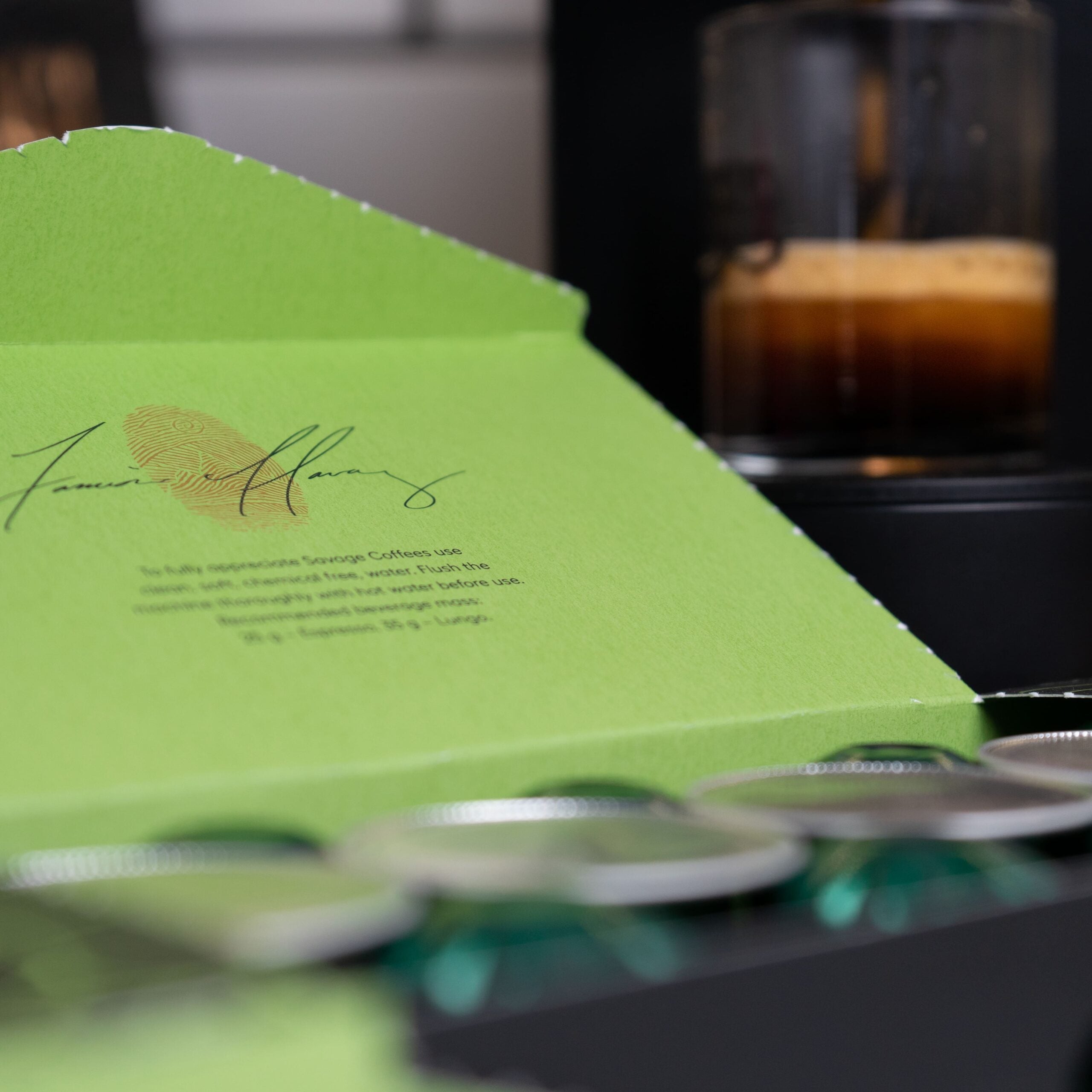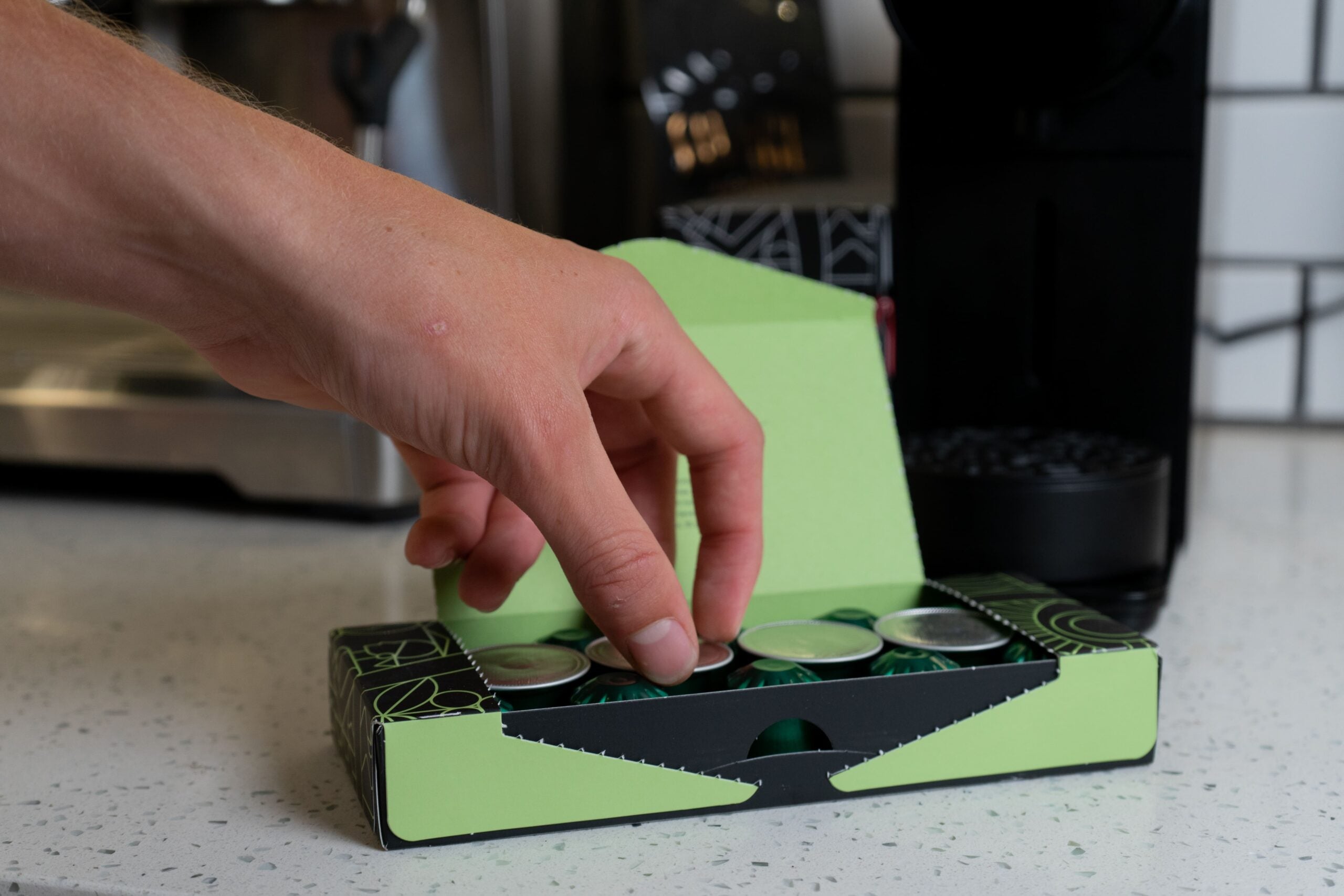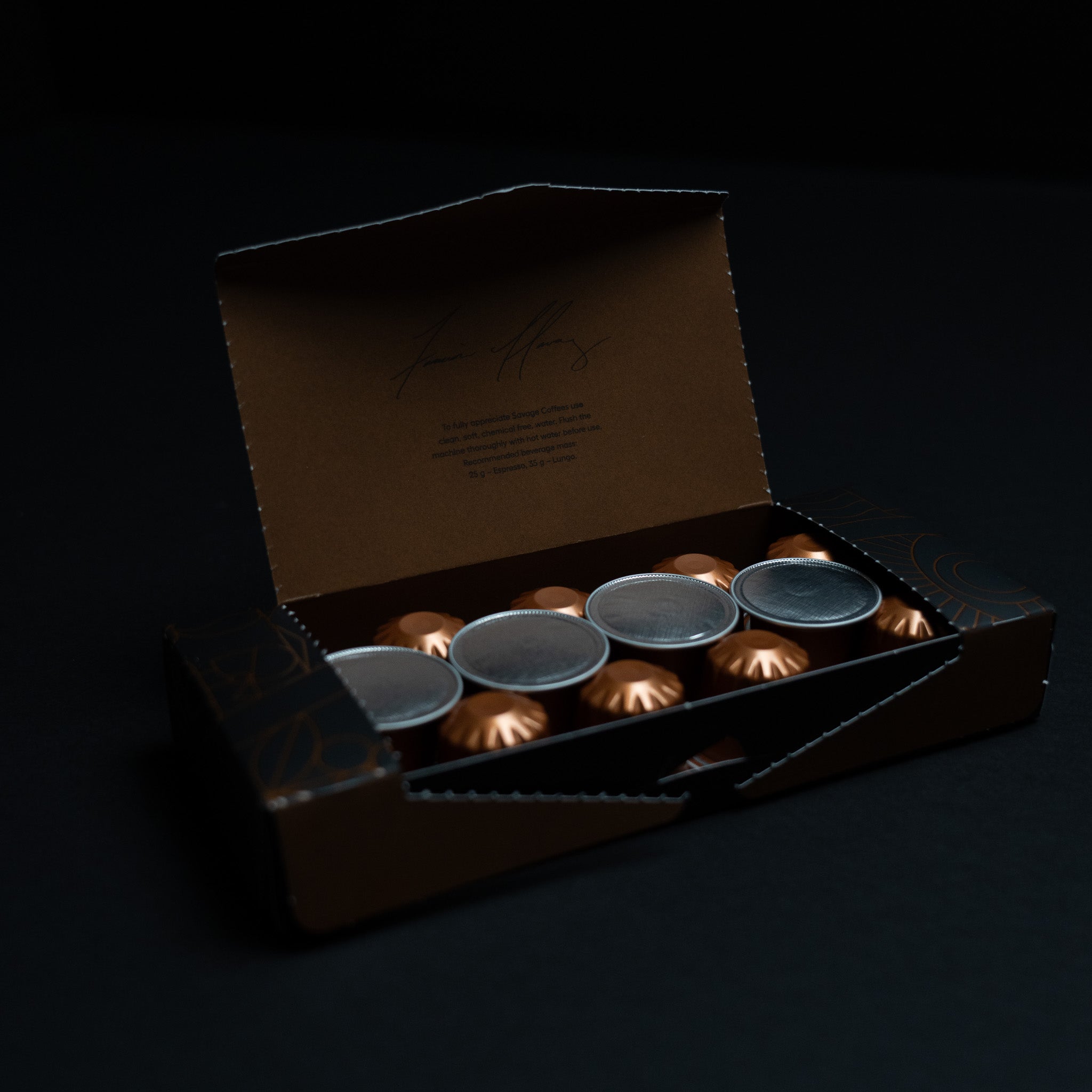




Illumination | Nespresso Compatible Capsules
Box of 14 Capsules
This washed CM Geisha is a clean & invigorating coffee. It represents the terroir of Finca Deborah with elegant floral & citrus notes compelled with a sparkling acidity & creamy mouthfeel developed with the Carbonic Maceration process.
Quantity ~ Each box contains 14 capsules
Producer ~ Finca Deborah
Process ~ Washed Carbonic Maceration
Variety ~ Geisha
Region ~ Chiriqui, Panama
Terroir ~ Rainforest, Shade-grown, 1900+ MASL, Volcanic Soil
Flavor Notes ~ Complex & invigorating – notes of pomegranate, nectarine, jasmine & black tea. Juicy acidity, floral, delicate finish.
We have long envisioned, and now achieved, delicious encapsulated coffees with excellent extraction and extraordinary flavor. We've encapsulated Illumination using aluminum capsules and infused it with nitrogen to maintain a low residual oxygen content – leading to a longer shelf life.
Choose options






1st Place Finish
Elipse
Finca Deborah's Elipse — the remarkable Geisha coffee that gained international acclaim when Indonesia's Mikael Jasin used it to win the 2024 World Barista Championship. This coffee is distinguished by its hybrid washed process, pioneered by Jamison Savage. It combines elements of nitrogen maceration and traditional washed methods to produce a cup of exceptional clarity, complexity, and vibrant fruit character.
Notes — Balanced & well-bodied – grapes, champagne, strawberry, cream, chocolate. Moderate acidity & rich, creamy mouthfeel.

2nd Place finish
Nirvana
Finca Deborah's Nirvana is a distinguished Geisha coffee that achieved significant recognition when Australian Barista Jack Simpson utilized it to secure second place in the 2024 World Barista Championship. This coffee is processed through an extended nitrogen macerated natural method, resulting in a cup that is fruit forward and syrupy.
Notes — Aromatic & structured - cherry, banana, and ripe tropical fruits. Complex, vivid acidity with a lingering finish.
— Brewing TIPS —

